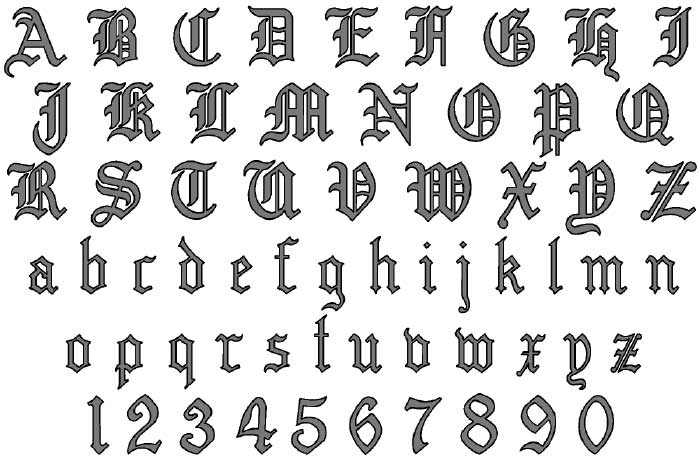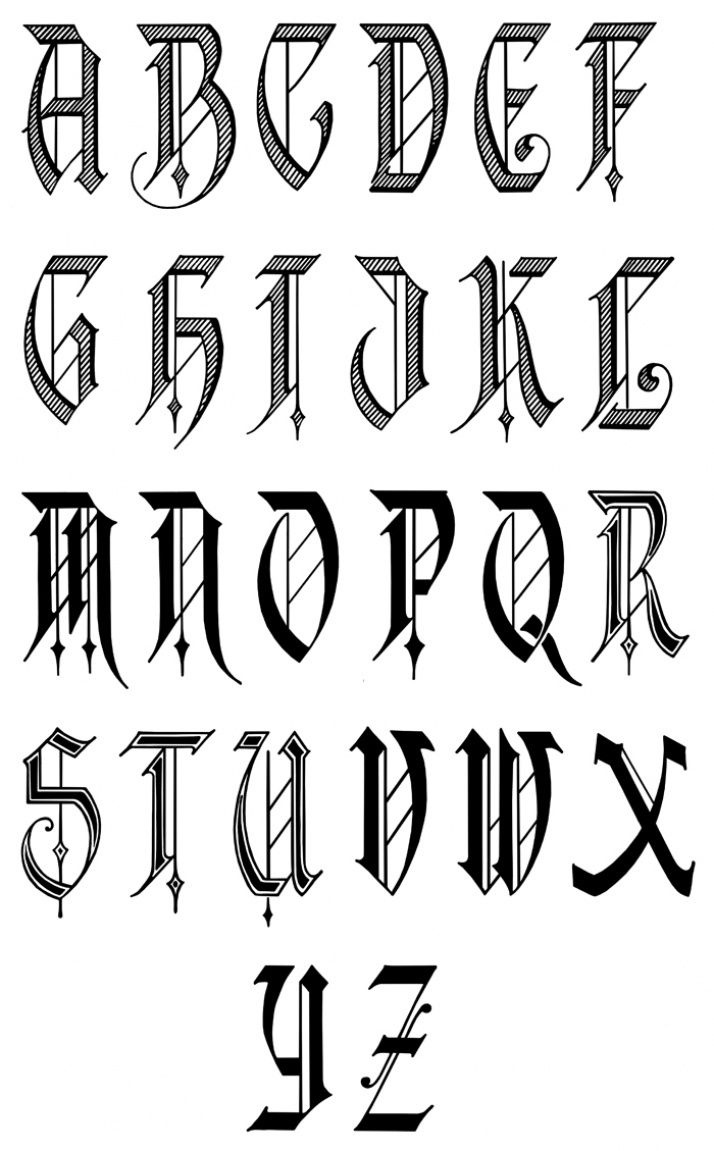


Its large size consumed a lot of manuscript space in a time when writing materials were very costly. Labor-intensive Carolingian, though legible, was unable to effectively keep up.

These books needed to be produced quickly to keep up with demand. Various German language blackletter typefaces English blackletter typefaces highlighting differences between select characters Modern interpretation of blackletter script in the form of the font "Old English" which includes several anachronistic glyphs, such as Arabic numerals, ampersand (instead of Tironian et) and several punctuation marks, but lacks letter alternatives like long ⟨s⟩ and ⟨r⟩ rotunda, scribal abbreviations and ligatures, and contains several relatively modern versions of letters such as ⟨x⟩, which is confusable with the letter ⟨r⟩. New universities were founded, each producing books for business, law, grammar, history and other pursuits, not solely religious works, for which earlier scripts typically had been used. Blackletter developed from Carolingian as an increasingly literate 12th-century Europe required new books in many different subjects. Luttrell Psalter, British Library.Ĭarolingian minuscule was the direct ancestor of blackletter. Origins Page from a 14th-century psalter ( Vulgate Ps 93:16–21), with blackletter " sine pedibus " text. Along with Italic type and Roman type, blackletter served as one of the major typefaces in the history of Western typography. Blackletter is sometimes referred to as Old English, but it is not to be confused with the Old English language, which predates blackletter by many centuries and was written in the insular script or in Futhorc. Fraktur is a notable script of this type, and sometimes the entire group of blackletter faces is incorrectly referred to as Fraktur. It continued to be commonly used for the Danish, Norwegian, and Swedish languages until the 1870s, Latvian language until the 1930s, and for the German language until the 1940s, when Hitler's distaste for what he or members of his party claimed was a "Jewish-influenced" script saw it officially discontinued in 1941. For the distinction between, / / and ⟨ ⟩, see IPA § Brackets and transcription delimiters.īlackletter (sometimes black letter), also known as Gothic script, Gothic minuscule, or Textura, was a script used throughout Western Europe from approximately 1150 until the 17th century. For an introductory guide on IPA symbols, see Help:IPA. This article contains phonetic transcriptions in the International Phonetic Alphabet (IPA).

1D504– 1D537, with some exceptions (see below)


 0 kommentar(er)
0 kommentar(er)
